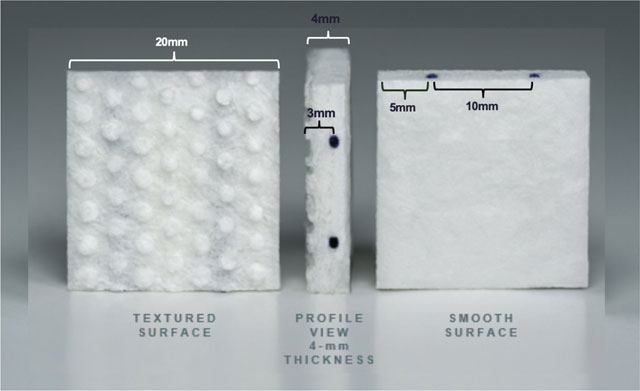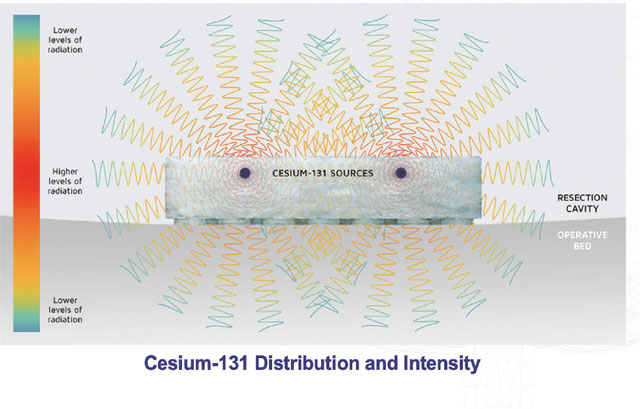GammaTile (GT) therapy is a new, FDA-cleared technology that provides intracranial delivery of radiation to patients who have had their operable brain tumor resected. GT, a collagen-based matrix tile that contains titanium-encapsulated Cesium-131 radiation-emitting seeds, delivers targeted radiation therapy that can aid in preventing brain tumor recurrence or significantly delay the time until that tumor might recur.
RUSH University Medical Center is the first academic medical center in Chicago to offer GT therapy.
How does GammaTile therapy work?
Following maximal safe resection of the brain tumor, RUSH neurosurgeons place GammaTiles along the sides of the cavity left by the tumor. Radiation is emitted from the GammaTiles that targets any residual tumor cells.
GTs emit radiation over the following weeks, with 50% of the therapeutic dose delivered within the first 10 days after surgery and 88% delivered within 30 days. Once the radiation course is complete, the matrix tile is reabsorbed by the body and the titanium capsules become inert.
Watch this video about GammaTile therapy for more information on how the technology works.
What are the benefits of GammaTile therapy?
- Radiation can be delivered immediately, instead of the typical two to three week healing period patients wait to receive external beam radiation therapy. The reduction in treatment time offers the potential to minimize local recurrence.
- Patients are unlikely to experience hair loss or physical discomfort from GT therapy.
- Patients do not need additional travel to the hospital to receive GT therapy.
- GammaTile is covered by Medicare and most private insurance companies.
Who are ideal candidates for this therapy?
- Patients with newly diagnosed or recurrent operable brain tumors including gliomas, glioblastomas, brain metastases, and meningiomas.
- Patients who will need adjuvant radiation therapy.


Types of brain tumors we treat
- Brain metastases
- Glioblastoma
- Glioma
- Meningioma
Clinical data
Early clinical data is promising in the use of GammaTiles. For patients with recurrent meningiomas, and brain metastases, studies have demonstrated a significant reduction in treatment site recurrence compared to their previous treatments.
(www.ncbi.nlm.nih.gov/pmc/articles/PMC7650484/)
Patients with recurrent glioblastomas demonstrated a potential for improved overall survival when comparing the effectiveness of surgery plus GT therapy with other types of treatments.
(https://ascopubs.org/doi/abs/10.1200/JCO.2021.39.15_suppl.2054)




